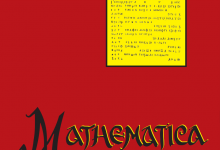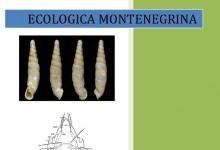Prirodno-matematički fakultet / Biologija-ekologija / EKOLOGIJA POPULACIJA
| Naziv predmeta: | EKOLOGIJA POPULACIJA |
| Šifra predmeta | Status predmeta | Semestar | Broj ECTS kredita | Fond časova (P+V+L) |
| 6161 | Obavezan | 1 | 5 | 3+0+2 |
| Studijski programi za koje se organizuje | Biologija-ekologija |
| Uslovljenost drugim predmetima | Nema uslovljenosti |
| Ciljevi izučavanja predmeta | Upoznavanje sa sa strukturom i dinamikom populacija i odnosima u njima i između njih |
| Ishodi učenja | Nakon što student položi ovaj ispit, biće u mogućnosti da: 1. Definiše i objasni osnovne pojmove vezane za populaciju i njene osobine, prostornu i genetičku strukturu i dinamiku 2. Razlikuje tipove rasta populacija u prirodi (ograničeni i neograničeni rast) i analizira faktore koji utiču i uslovljavaju tu dinamiku 3. Prepozna različite strategije u produženju vrste i razumije šta ih u prirodi uslovljava i na koji način 4. Razumije tipove interakcija unutar populacije i među populacijama i objasni na kojim zakonitostima se te interakcije zasnivaju 5. Primjeni stečena znanja u praktičnim istraživanjima na terenu i predvidi i zaključi kako određeni faktori u životnoj sredini, uključujući i antropogeni uticaj, mogu uticati na neku populaciju |
| Ime i prezime nastavnika i saradnika | doc Andjelka Scepanovic, nastavnik mr Borislav Ivanovic, saradnik |
| Metod nastave i savladanja gradiva | Predavanja, laboratorijske vježbe, konsultacije, terenski rad |
| Plan i program rada |
|
Pripremne nedjelje - priprema i upis semestra I nedjelja, pred. - Uvod: Definicija populacije i njene osnovne karakteristike I nedjelja, vježbe - Uvodna vježba: Opšte osobine populacije, tipovi populacija II nedjelja, pred.-Struktura populacije – genetička struktura i sastav vrsta - faktori koji utiču II nedjelja, vježbe Genetička struktura populacije – Hardi-Vajnbergova jednačina III nedjelja, pred.- Prostorna struktura populacije: Gustina populacije i metode određivanja III nedjelja, vježbe - Gustina populacije – određivanje gustine, pokrovnosti i učestalosti metodom kvadrata. Slučajni uzorak. IV nedjelja, pred.- Prostorna struktura populacije: Distribucija i disperzija. Migracije i raseljavanje IV nedjelja, vježbe - Gustina populacije – određivanje gustine metodom markiranja V nedjelja, pred.- Dinamika populacija: Natalitet, mortalitet, tablice života, preživljavanje, uzrasna struktura V nedjelja, vježbe - Tablice života – izračunavanje. Krive preživljavanja - simulacija. VI nedjelja, pred.- Rast populacije: neograničeni i ograničeni. Fluktuacije i oscilacije, populacioni ciklusi VI nedjelja, vježbe - Rast populacije – rad u Excelu i simulacija u Populus-u VII nedjelja, pred.- KOLOKVIJUM I VII nedjelja, vježbe - TEST I VIII nedjelja, pred.- Različitost životnih ciklusa i strategije u produženju vrste VIII nedjelja, vježbe - r i K strategija produzenja vrste IX nedjelja, pred.- Interakcije između populacija: Kompeticija - intraspecijska kompeticija IX nedjelja, vježbe - Intraspecijska kompeticija – rad u Excelu i simulacija u Populus-u X nedjelja, pred.- Interakcije između populacija - Interspecijska kompeticija, ekološke niše. Tilmanov model X nedjelja, vježbe - Interspecijska kompeticija – rad u Excelu i simulacija u Populus-u XI nedjelja, pred.- Interakcije između populacija: Predatorstvo, Lotka-Volterin model, funkcionalni odgovori XI nedjelja, vježbe - Predatorstvo – rad u Excelu i simulacija u Populus-u XII nedjelja, pred.- Interakcije između populacija: Parazitizam, mutualizam, komensalizam, amensalizam XII nedjelja, vježbe - Parazitizam, mutualizam, komensalizam, amensalizam - rad u Excelu i simulacija Populus XIII nedjelja, pred.- Regulisanje populacije, populacione teorije. Metapopulacije. XIII nedjelja, vježbe - Metapopulacije - matematički model XIV nedjelja, pred.- KOLOKVIJUM II XIV nedjelja, vježbe - Predispitna vjezba XV nedjelja, pred.- Poporavni kolokvijum XV nedjelja, vježbe - TEST II |
| Opterećenje studenta | Ukupno u semestru: 86 sati (nastava) + 10 sati (priprema) + 24 sata (dopunski rad, ukljucujuci konsultacije) |
| Nedjeljno | U toku semestra |
| 5 kredita x 40/30=6 sati i 40 minuta
3 sat(a) teorijskog predavanja 2 sat(a) praktičnog predavanja 0 vježbi 1 sat(a) i 40 minuta samostalnog rada, uključujući i konsultacije |
Nastava i završni ispit:
6 sati i 40 minuta x 16 =106 sati i 40 minuta Neophodna priprema prije početka semestra (administracija, upis, ovjera): 6 sati i 40 minuta x 2 =13 sati i 20 minuta Ukupno opterećenje za predmet: 5 x 30=150 sati Dopunski rad za pripremu ispita u popravnom ispitnom roku, uključujući i polaganje popravnog ispita od 0 do 30 sati (preostalo vrijeme od prve dvije stavke do ukupnog opterećenja za predmet) 30 sati i 0 minuta Struktura opterećenja: 106 sati i 40 minuta (nastava), 13 sati i 20 minuta (priprema), 30 sati i 0 minuta (dopunski rad) |
| Obaveze studenta u toku nastave | Student je obavezan da prisustvuje predavanjima, vježbama, testovima i kolokvijumima. |
| Konsultacije | Ponedeljak: 12h-14h |
| Literatura | Esa Ranta, Per Lundberg, Veijo Kaietala (2005): Ecology of populations. Science. Begon, M., J.L. Harper and C.R. Townsend (1996) : Ecology: Individuals, Populations and Communities, Blackwell, London. Ricklefs, R.E. (1996): Ecology. W.H. Freeman and Company, New York. |
| Oblici provjere znanja i ocjenjivanje | 2 Kolokvijuma po 25 poena, ukupno 50 poena; 2 testa po 5 poena, ukupno 10 poena; Završni ispit: 40 poena. Prelazna ocjena (E): ako se kumulativno sakupi najmanje 51 poen |
| Posebne naznake za predmet | |
| Napomena | Dodatne informacije o predmetu mogu se dobiti kod predmetnog nastavnika, asistenta, u sekretarijatu Studijske grupe Biologija i u Studentskoj službi PMF-a. |
| Ocjena: | F | E | D | C | B | A |
| Broj poena | manje od 50 poena | više ili jednako 50 poena i manje od 60 poena | više ili jednako 60 poena i manje od 70 poena | više ili jednako 70 poena i manje od 80 poena | više ili jednako 80 poena i manje od 90 poena | više ili jednako 90 poena |
Prirodno-matematički fakultet / Biologija-ekologija / PRINCIPI ODRŽIVOG RAZVOJA
| Naziv predmeta: | PRINCIPI ODRŽIVOG RAZVOJA |
| Šifra predmeta | Status predmeta | Semestar | Broj ECTS kredita | Fond časova (P+V+L) |
| 6167 | Obavezan | 1 | 3 | 2++0 |
| Studijski programi za koje se organizuje | Biologija-ekologija |
| Uslovljenost drugim predmetima | |
| Ciljevi izučavanja predmeta | |
| Ishodi učenja | |
| Ime i prezime nastavnika i saradnika | |
| Metod nastave i savladanja gradiva |
| Plan i program rada |
|
Pripremne nedjelje - priprema i upis semestra I nedjelja, pred. - I nedjelja, vježbe - II nedjelja, pred.- II nedjelja, vježbe III nedjelja, pred.- III nedjelja, vježbe - IV nedjelja, pred.- IV nedjelja, vježbe - V nedjelja, pred.- V nedjelja, vježbe - VI nedjelja, pred.- VI nedjelja, vježbe - VII nedjelja, pred.- VII nedjelja, vježbe - VIII nedjelja, pred.- VIII nedjelja, vježbe - IX nedjelja, pred.- IX nedjelja, vježbe - X nedjelja, pred.- X nedjelja, vježbe - XI nedjelja, pred.- XI nedjelja, vježbe - XII nedjelja, pred.- XII nedjelja, vježbe - XIII nedjelja, pred.- XIII nedjelja, vježbe - XIV nedjelja, pred.- XIV nedjelja, vježbe - XV nedjelja, pred.- XV nedjelja, vježbe - |
| Opterećenje studenta | |
| Nedjeljno | U toku semestra |
| 3 kredita x 40/30=4 sati i 0 minuta
2 sat(a) teorijskog predavanja 0 sat(a) praktičnog predavanja 0 vježbi 2 sat(a) i 0 minuta samostalnog rada, uključujući i konsultacije |
Nastava i završni ispit:
4 sati i 0 minuta x 16 =64 sati i 0 minuta Neophodna priprema prije početka semestra (administracija, upis, ovjera): 4 sati i 0 minuta x 2 =8 sati i 0 minuta Ukupno opterećenje za predmet: 3 x 30=90 sati Dopunski rad za pripremu ispita u popravnom ispitnom roku, uključujući i polaganje popravnog ispita od 0 do 30 sati (preostalo vrijeme od prve dvije stavke do ukupnog opterećenja za predmet) 18 sati i 0 minuta Struktura opterećenja: 64 sati i 0 minuta (nastava), 8 sati i 0 minuta (priprema), 18 sati i 0 minuta (dopunski rad) |
| Obaveze studenta u toku nastave | |
| Konsultacije | |
| Literatura | |
| Oblici provjere znanja i ocjenjivanje | |
| Posebne naznake za predmet | |
| Napomena |
| Ocjena: | F | E | D | C | B | A |
| Broj poena | manje od 50 poena | više ili jednako 50 poena i manje od 60 poena | više ili jednako 60 poena i manje od 70 poena | više ili jednako 70 poena i manje od 80 poena | više ili jednako 80 poena i manje od 90 poena | više ili jednako 90 poena |
Prirodno-matematički fakultet / Biologija-ekologija / METODE ISTRAŽIVANJA U EKOLOGIJI
| Naziv predmeta: | METODE ISTRAŽIVANJA U EKOLOGIJI |
| Šifra predmeta | Status predmeta | Semestar | Broj ECTS kredita | Fond časova (P+V+L) |
| 6580 | Obavezan | 2 | 6 | 2+0+2 |
| Studijski programi za koje se organizuje | Biologija-ekologija |
| Uslovljenost drugim predmetima | Bicenologija, ekologija populacija |
| Ciljevi izučavanja predmeta | : Kroz ovaj predmet studenti se upoznaju sa osnovnim metodama koje se koriste u izučavanju akvatičnih i terestričnih ekosistema, što predstavlja bazu za budući rad na magistarskoj i doktorskoj disertaciji |
| Ishodi učenja | Po završetku ovog kursa student će moći da: - ovladaće sa metodama koje se najčešće koriste u ekološkim istraživanjima, - modifikuje postojeće metode u skladu sa specifičnostima vrsta ili sistema, -osposobiće se da naučene metode primjeni u izradi diplomskog rada kao, a kasnije magistarskih ili doktorskih disertacija. - prenese stečeno znanje na učenike raznih nivoa obrazovanja, |
| Ime i prezime nastavnika i saradnika | Drago Marić |
| Metod nastave i savladanja gradiva | Predavanja, laboratorijske vježbe, terenski rad. Učenje i samostalni praktični rad. Konsultacije. |
| Plan i program rada |
|
Pripremne nedjelje - priprema i upis semestra I nedjelja, pred. - Uvod. Akvatični ekosistemi - morfometrijske karakteristike; I nedjelja, vježbe - Uvodna obavještenja, način rada, organizacija vježbi, oprema i pribor, II nedjelja, pred.-Metode istraživanja fizičko-hemijskih parametara životne sredine; II nedjelja, vježbe Upoznavanje i rad sa terenskom mini lab. za određivanje fizičko-hemijskih parametara ž. sredine III nedjelja, pred.- Testovi toksičnosti: kratkotrajni, srednjoročni i testovi sa posebnom namjenom; III nedjelja, vježbe - Upoznavanje sa opremom u Ekotoksikološkoj laboratoriji IV nedjelja, pred.- Metode istraživanja hidrobiocenoza: plankton, perifiton, makrofiton; IV nedjelja, vježbe - Upoznavanje sa opremom u Ekotoksikološkoj laboratoriji V nedjelja, pred.- Metode istraživanja hidrobiocenoza: makroinvertebrata, ribe; V nedjelja, vježbe - Upoznavanje sa opremom za hidrobiološka istraživanja,demonstracija VI nedjelja, pred.- Metode biološkog određivanja kvaliteta vode (indeks saprobosti i diverziteta, trofički indeksi); VI nedjelja, vježbe - Terenski rad na vodenim ekosistema VII nedjelja, pred.- I kolokvijum VII nedjelja, vježbe - Terenski rad na vodenim ekosistema VIII nedjelja, pred.- Metode istraživanja mikroorganizama; VIII nedjelja, vježbe - Mikrobiološke tehike i oprema-pokazna vježba IX nedjelja, pred.- Metode istraživanja kopnenih beskičmenjaka; IX nedjelja, vježbe - Upoznavanje sa opremom za istraživanja beskičmenjaka-demonstracija X nedjelja, pred.- Metode istraživanja kičmenjaka; X nedjelja, vježbe - Demonstracija metoda na terenu, transekt, cenzus XI nedjelja, pred.- II kolokvijum; XI nedjelja, vježbe - Demonstracija metoda na terenu, transekt, cenzus XII nedjelja, pred.- Metode istraživanja ekosistema šuma, šikara i šibljaka; XII nedjelja, vježbe - Upoznavanje sa opremom u fitoekologiji XIII nedjelja, pred.- Metode istraživanja livada, livada, kamenjara, planinskih rudina i točila; XIII nedjelja, vježbe - Terenski rad na kopnenim ekosistema XIV nedjelja, pred.- Metode istraživanja produkcije ekosistema (vodeni i kopneni); XIV nedjelja, vježbe - Terenski rad na kopnenim ekosistema XV nedjelja, pred.- Statistička obrada i analiza podataka; Savremeni softerski paketi; XV nedjelja, vježbe - Obrada podataka, interpretacija i zaključivanje |
| Opterećenje studenta | 6 kredita x 40/30 = 8 sati Struktura: 3 sata predavanja 2 sata laboratorijskih vježbi 3 sata samostalnog rada uključujući i konsultacije |
| Nedjeljno | U toku semestra |
| 6 kredita x 40/30=8 sati i 0 minuta
2 sat(a) teorijskog predavanja 2 sat(a) praktičnog predavanja 0 vježbi 4 sat(a) i 0 minuta samostalnog rada, uključujući i konsultacije |
Nastava i završni ispit:
8 sati i 0 minuta x 16 =128 sati i 0 minuta Neophodna priprema prije početka semestra (administracija, upis, ovjera): 8 sati i 0 minuta x 2 =16 sati i 0 minuta Ukupno opterećenje za predmet: 6 x 30=180 sati Dopunski rad za pripremu ispita u popravnom ispitnom roku, uključujući i polaganje popravnog ispita od 0 do 30 sati (preostalo vrijeme od prve dvije stavke do ukupnog opterećenja za predmet) 36 sati i 0 minuta Struktura opterećenja: 128 sati i 0 minuta (nastava), 16 sati i 0 minuta (priprema), 36 sati i 0 minuta (dopunski rad) |
| Obaveze studenta u toku nastave | Studenti su obavezni da pohađaju nastavu, odrade laboratorijske vježbe i rade oba kolokvijuma |
| Konsultacije | |
| Literatura | Stanković,S. Jezera svijeta. BOITANI L., FULLER T. Research Techniques in Animal Ecology, Controversies and Consequences (2000). APHA: Standard Methods for the Examination of Water and Wastewater, 2001. |
| Oblici provjere znanja i ocjenjivanje | Dva testa po 5 poena (ukupno 10 poena) - Dva kolokvijuma po 20 poena (ukupno 40 poena) - Prisustvo nastavi: 2 poena - Završni ispit 48 poena Prelazna ocjena se dobija ako se kumulativno sakupi najmanje 51 poen |
| Posebne naznake za predmet | |
| Napomena |
| Ocjena: | F | E | D | C | B | A |
| Broj poena | manje od 50 poena | više ili jednako 50 poena i manje od 60 poena | više ili jednako 60 poena i manje od 70 poena | više ili jednako 70 poena i manje od 80 poena | više ili jednako 80 poena i manje od 90 poena | više ili jednako 90 poena |
Prirodno-matematički fakultet / Biologija-ekologija / BIOSTATISTIKA
| Naziv predmeta: | BIOSTATISTIKA |
| Šifra predmeta | Status predmeta | Semestar | Broj ECTS kredita | Fond časova (P+V+L) |
| 6864 | Obavezan | 2 | 3 | 2+1+0 |
| Studijski programi za koje se organizuje | Biologija-ekologija |
| Uslovljenost drugim predmetima | INFORMACIJE SE NALAZE U OKVIRU PREDMETA BIOSTATISTIKA NA MASTER STUDIJAMA BIOLOGIJE |
| Ciljevi izučavanja predmeta | INFORMACIJE SE NALAZE U OKVIRU PREDMETA BIOSTATISTIKA NA MASTER STUDIJAMA BIOLOGIJE |
| Ishodi učenja | Razumijevanje i primjena statističkih alata koji se koriste u biologiji. |
| Ime i prezime nastavnika i saradnika | INFORMACIJE SE NALAZE U OKVIRU PREDMETA BIOSTATISTIKA NA MASTER STUDIJAMA BIOLOGIJE |
| Metod nastave i savladanja gradiva | INFORMACIJE SE NALAZE U OKVIRU PREDMETA BIOSTATISTIKA NA MASTER STUDIJAMA BIOLOGIJE |
| Plan i program rada |
|
Pripremne nedjelje - priprema i upis semestra I nedjelja, pred. - I nedjelja, vježbe - II nedjelja, pred.- II nedjelja, vježbe III nedjelja, pred.- III nedjelja, vježbe - IV nedjelja, pred.- IV nedjelja, vježbe - V nedjelja, pred.- V nedjelja, vježbe - VI nedjelja, pred.- VI nedjelja, vježbe - VII nedjelja, pred.- VII nedjelja, vježbe - VIII nedjelja, pred.- VIII nedjelja, vježbe - IX nedjelja, pred.- IX nedjelja, vježbe - X nedjelja, pred.- X nedjelja, vježbe - XI nedjelja, pred.- XI nedjelja, vježbe - XII nedjelja, pred.- XII nedjelja, vježbe - XIII nedjelja, pred.- XIII nedjelja, vježbe - XIV nedjelja, pred.- XIV nedjelja, vježbe - XV nedjelja, pred.- XV nedjelja, vježbe - |
| Opterećenje studenta | |
| Nedjeljno | U toku semestra |
| 3 kredita x 40/30=4 sati i 0 minuta
2 sat(a) teorijskog predavanja 0 sat(a) praktičnog predavanja 1 vježbi 1 sat(a) i 0 minuta samostalnog rada, uključujući i konsultacije |
Nastava i završni ispit:
4 sati i 0 minuta x 16 =64 sati i 0 minuta Neophodna priprema prije početka semestra (administracija, upis, ovjera): 4 sati i 0 minuta x 2 =8 sati i 0 minuta Ukupno opterećenje za predmet: 3 x 30=90 sati Dopunski rad za pripremu ispita u popravnom ispitnom roku, uključujući i polaganje popravnog ispita od 0 do 30 sati (preostalo vrijeme od prve dvije stavke do ukupnog opterećenja za predmet) 18 sati i 0 minuta Struktura opterećenja: 64 sati i 0 minuta (nastava), 8 sati i 0 minuta (priprema), 18 sati i 0 minuta (dopunski rad) |
| Obaveze studenta u toku nastave | |
| Konsultacije | |
| Literatura | |
| Oblici provjere znanja i ocjenjivanje | |
| Posebne naznake za predmet | |
| Napomena |
| Ocjena: | F | E | D | C | B | A |
| Broj poena | manje od 50 poena | više ili jednako 50 poena i manje od 60 poena | više ili jednako 60 poena i manje od 70 poena | više ili jednako 70 poena i manje od 80 poena | više ili jednako 80 poena i manje od 90 poena | više ili jednako 90 poena |
Prirodno-matematički fakultet / Biologija-ekologija / KONZERVACIONA BIOLOGIJA
| Naziv predmeta: | KONZERVACIONA BIOLOGIJA |
| Šifra predmeta | Status predmeta | Semestar | Broj ECTS kredita | Fond časova (P+V+L) |
| 6867 | Obavezan | 1 | 6 | 3+0+2 |
| Studijski programi za koje se organizuje | Biologija-ekologija |
| Uslovljenost drugim predmetima | |
| Ciljevi izučavanja predmeta | |
| Ishodi učenja | |
| Ime i prezime nastavnika i saradnika | |
| Metod nastave i savladanja gradiva |
| Plan i program rada |
|
Pripremne nedjelje - priprema i upis semestra I nedjelja, pred. - I nedjelja, vježbe - II nedjelja, pred.- II nedjelja, vježbe III nedjelja, pred.- III nedjelja, vježbe - IV nedjelja, pred.- IV nedjelja, vježbe - V nedjelja, pred.- V nedjelja, vježbe - VI nedjelja, pred.- VI nedjelja, vježbe - VII nedjelja, pred.- VII nedjelja, vježbe - VIII nedjelja, pred.- VIII nedjelja, vježbe - IX nedjelja, pred.- IX nedjelja, vježbe - X nedjelja, pred.- X nedjelja, vježbe - XI nedjelja, pred.- XI nedjelja, vježbe - XII nedjelja, pred.- XII nedjelja, vježbe - XIII nedjelja, pred.- XIII nedjelja, vježbe - XIV nedjelja, pred.- XIV nedjelja, vježbe - XV nedjelja, pred.- XV nedjelja, vježbe - |
| Opterećenje studenta | |
| Nedjeljno | U toku semestra |
| 6 kredita x 40/30=8 sati i 0 minuta
3 sat(a) teorijskog predavanja 2 sat(a) praktičnog predavanja 0 vježbi 3 sat(a) i 0 minuta samostalnog rada, uključujući i konsultacije |
Nastava i završni ispit:
8 sati i 0 minuta x 16 =128 sati i 0 minuta Neophodna priprema prije početka semestra (administracija, upis, ovjera): 8 sati i 0 minuta x 2 =16 sati i 0 minuta Ukupno opterećenje za predmet: 6 x 30=180 sati Dopunski rad za pripremu ispita u popravnom ispitnom roku, uključujući i polaganje popravnog ispita od 0 do 30 sati (preostalo vrijeme od prve dvije stavke do ukupnog opterećenja za predmet) 36 sati i 0 minuta Struktura opterećenja: 128 sati i 0 minuta (nastava), 16 sati i 0 minuta (priprema), 36 sati i 0 minuta (dopunski rad) |
| Obaveze studenta u toku nastave | |
| Konsultacije | |
| Literatura | |
| Oblici provjere znanja i ocjenjivanje | |
| Posebne naznake za predmet | |
| Napomena |
| Ocjena: | F | E | D | C | B | A |
| Broj poena | manje od 50 poena | više ili jednako 50 poena i manje od 60 poena | više ili jednako 60 poena i manje od 70 poena | više ili jednako 70 poena i manje od 80 poena | više ili jednako 80 poena i manje od 90 poena | više ili jednako 90 poena |
Prirodno-matematički fakultet / Biologija-ekologija / BIOGEOGRAFIJA
| Naziv predmeta: | BIOGEOGRAFIJA |
| Šifra predmeta | Status predmeta | Semestar | Broj ECTS kredita | Fond časova (P+V+L) |
| 6984 | Obavezan | 1 | 5 | 3+0+1 |
| Studijski programi za koje se organizuje | Biologija-ekologija |
| Uslovljenost drugim predmetima | nema |
| Ciljevi izučavanja predmeta | Kroz ovaj predmet studenti se upoznaju sa osnovnim zakonitostima geografskog rasprostranjenja organizama |
| Ishodi učenja | Po završetku ovog kursa student će moći da: - ocjeni globalni i specifični značaj živog svijeta u Crnoj Gori, - objasni smisao zaštite neke vrste u našim uslovima, - vrši kartiranje vrsta ili grupa svih nivoa i tipova rasprostranjenja - prenese stečeno znanje na studente ili učenike raznih nivoa obrazovanja |
| Ime i prezime nastavnika i saradnika | Drago Marić |
| Metod nastave i savladanja gradiva | Predavanja, vježbe, seminarski radovi, konsultacije, terenski rad |
| Plan i program rada |
|
Pripremne nedjelje - priprema i upis semestra I nedjelja, pred. - Uvod – Biogeografija i njen cilj, Istorijat razvoja I nedjelja, vježbe - Kartiranje - vježbe II nedjelja, pred.-Metode u Biogeografiji: Zoogeografija II nedjelja, vježbe Kartiranje III nedjelja, pred.- Metode u Biogeografiji: Fitogeografija III nedjelja, vježbe - Kartiranje IV nedjelja, pred.- Statisticke metode u zoogeografiji IV nedjelja, vježbe - Statisticke metode u zoogeografiji V nedjelja, pred.- Statisticke metode u Filogeografiji V nedjelja, vježbe - Statisticke metode u Filogeografiji VI nedjelja, pred.- Tipovi areala VI nedjelja, vježbe - Tipovi areala VII nedjelja, pred.- Areali I Kolokvijum VII nedjelja, vježbe - Tipovi areala, VIII nedjelja, pred.- Nastanak lokalne flore i faune VIII nedjelja, vježbe - I Test IX nedjelja, pred.- Centri nastanka: problemi definisanja i modeliranje IX nedjelja, vježbe - Faunistička podjela vodenih sistema X nedjelja, pred.- Biogeografsko rejoniranje X nedjelja, vježbe - Faunistička podjela vodenih sistema XI nedjelja, pred.- Zoogeografske oblasti XI nedjelja, vježbe - Faunistička podjela kopnenih sistema XII nedjelja, pred.- Fitogeografske oblasti XII nedjelja, vježbe - Floristička podjela kopnenih sistema XIII nedjelja, pred.- Predeli: definisanje i modeliranje; Ekoregioni XIII nedjelja, vježbe - Floristička podjela vodenih sistema XIV nedjelja, pred.- Biogeografska podjela Balkanskog poluostrva XIV nedjelja, vježbe - Biogeografska podjela Balkanskog poluostrva, oblasti i podoblasti XV nedjelja, pred.- II Kolokvijum XV nedjelja, vježbe - II test |
| Opterećenje studenta | Struktura opterećenja: 113 sati (Nastava)+14 sata (Priprema)+23 sati (Dopunski rad) |
| Nedjeljno | U toku semestra |
| 5 kredita x 40/30=6 sati i 40 minuta
3 sat(a) teorijskog predavanja 1 sat(a) praktičnog predavanja 0 vježbi 2 sat(a) i 40 minuta samostalnog rada, uključujući i konsultacije |
Nastava i završni ispit:
6 sati i 40 minuta x 16 =106 sati i 40 minuta Neophodna priprema prije početka semestra (administracija, upis, ovjera): 6 sati i 40 minuta x 2 =13 sati i 20 minuta Ukupno opterećenje za predmet: 5 x 30=150 sati Dopunski rad za pripremu ispita u popravnom ispitnom roku, uključujući i polaganje popravnog ispita od 0 do 30 sati (preostalo vrijeme od prve dvije stavke do ukupnog opterećenja za predmet) 30 sati i 0 minuta Struktura opterećenja: 106 sati i 40 minuta (nastava), 13 sati i 20 minuta (priprema), 30 sati i 0 minuta (dopunski rad) |
| Obaveze studenta u toku nastave | Prisustvo predavanjima, laboratorijskim i terenskim vježbama je obavezno, kao i izrada testova i kolokvijuma |
| Konsultacije | |
| Literatura | C Barry, Cox Peter, D Moore. Biogeography An Ecological and Evolutionary Approach Seventh Edition |
| Oblici provjere znanja i ocjenjivanje | - Dva testa po 5 poena (ukupno 10 poena) - Dva Kolokvijuma po 20 (ukupno 40 poena) - Prisustvo nastavi 2 poena - Završni ispit 48 poena poena - Prelazna ocjena se dobija ako se kumulativno sakupi najmanje 51 poen. |
| Posebne naznake za predmet | |
| Napomena |
| Ocjena: | F | E | D | C | B | A |
| Broj poena | manje od 50 poena | više ili jednako 50 poena i manje od 60 poena | više ili jednako 60 poena i manje od 70 poena | više ili jednako 70 poena i manje od 80 poena | više ili jednako 80 poena i manje od 90 poena | više ili jednako 90 poena |
Prirodno-matematički fakultet / Biologija-ekologija / BIOCENOLOGIJA
| Naziv predmeta: | BIOCENOLOGIJA |
| Šifra predmeta | Status predmeta | Semestar | Broj ECTS kredita | Fond časova (P+V+L) |
| 6985 | Obavezan | 1 | 6 | 3+0+2 |
| Studijski programi za koje se organizuje | Biologija-ekologija |
| Uslovljenost drugim predmetima | Nema uslovljenosti |
| Ciljevi izučavanja predmeta | Upoznavanje sa strukturom, razvojem, dinamikom, regulacijom i biološkom raznovrsnošću biocenoza |
| Ishodi učenja | Nakon što student položi ovaj ispit, biće u mogućnosti da: 1. Definiše i objasni osnovne pojmove vezane za biocenozu i njene osobine, kvalitativni i kvantitativni sastav, strukturu i dinamiku 2. Razumije prostornu i vremensku organizaciju biocenoze i analizira faktore koji utiču i uslovljavaju njenu organizaciju, dinamiku i stabilnost 3. Prepozna funkcionalnu organizaciju neke biocenoze i objasni sistem odnosa koji postoji između njenih članova 4. Razumije biološku raznovrsnost biocenoze i objasni faktore koji na nju utiču na regionalnom i lokalnom nivou 5. Objasni i analizira mehanizme regulacije biodiverziteta i uoči razliku između ravnotežnih i neravnotežnih teorija regulacije 6. Primjeni stečena znanja u praktičnim istraživanjima na terenu i predvidi i zaključi kako određene promjene u životnoj sredini, uključujući i antropogeni uticaj, mogu uticati na neku biocenozu |
| Ime i prezime nastavnika i saradnika | Rakočević Jelena - nastavnik |
| Metod nastave i savladanja gradiva | Predavanja, laboratorijske vježbe, konsultacije, terenski rad. |
| Plan i program rada |
|
Pripremne nedjelje - priprema i upis semestra I nedjelja, pred. - Uvod: Pojam i osobine biocenoze I nedjelja, vježbe - Vrste i podjela biocenoza. II nedjelja, pred.-Struktura biocenoze – kvalitativni i kvantitativni sastav. Raspodjela abundance. Diverzitet vrsta. II nedjelja, vježbe Određivanje strukture zajednice – metoda kvadrata – teren. III nedjelja, pred.- Funkcionalna organizacija biocenoze: interakcije između populacija III nedjelja, vježbe - Određivanje strukture zajednice – metoda kvadrata – analiza podataka sa terena IV nedjelja, pred.- Funkcionalna organizacija biocenoze: Odnosi ishrane. Trofičke piramide. IV nedjelja, vježbe - Određivanje strukture zajednice – metoda lovnih klopki – teren. V nedjelja, pred.- Stabilnost biocenoze. Odnos diverziteta, produktivnosti i stabilnosti. V nedjelja, vježbe - Određivanje strukture zajednice – metoda lovnih klopki – analiza podataka sa terena VI nedjelja, pred.- Dinamika biocenoza: Periodizam i sukcesije VI nedjelja, vježbe - Sukcesije – mehanizmi. Rad u Excel-u. VII nedjelja, pred.- KOLOKVIJUM I VII nedjelja, vježbe - TEST I VIII nedjelja, pred.- Biološka raznovrsnost (biodiverzitet) – uvod VIII nedjelja, vježbe - Određivanje indeksa diverziteta. IX nedjelja, pred.- Nivoi biodiverziteta IX nedjelja, vježbe - Regulisanje biodiverziteta – ravnotežne teorije: Širina niše i dijeljenje resursa (Excel) X nedjelja, pred.- Gradijenti diverziteta i faktori koji utiču X nedjelja, vježbe - Regulisanje biodiverziteta – ravnotežne teorije: Ostrvska biogeografija (Excel) XI nedjelja, pred.- Regionalna i lokalna raznovrsnost. Mehanizmi regulacije biodiverziteta. XI nedjelja, vježbe - Regulisanje biodiverziteta – neravnotežna teorija: Hipoteza poremećaja (biološki poremećaji) XII nedjelja, pred.- Ravnotežne teorije regulacije biodiverziteta XII nedjelja, vježbe - Regulisanje biodiverziteta – neravnotežna teorija: Hipoteza poremećaja (fizički poremećaji sredine) XIII nedjelja, pred.- Neravnotežne teorije regulacije biodiverziteta (model otvorene i zatvorene zajednice) XIII nedjelja, vježbe - Termin za nadoknadu vjezbi XIV nedjelja, pred.- KOLOKVIJUM II XIV nedjelja, vježbe - Predispitna vježba. XV nedjelja, pred.- Poporavni kolokvijum XV nedjelja, vježbe - TEST II |
| Opterećenje studenta | Ukupno po semestru: 128 sati (nastava) + 16 sati (priprema) + 36 sati (dopunski rad, ukljucujuci knsultacije) |
| Nedjeljno | U toku semestra |
| 6 kredita x 40/30=8 sati i 0 minuta
3 sat(a) teorijskog predavanja 2 sat(a) praktičnog predavanja 0 vježbi 3 sat(a) i 0 minuta samostalnog rada, uključujući i konsultacije |
Nastava i završni ispit:
8 sati i 0 minuta x 16 =128 sati i 0 minuta Neophodna priprema prije početka semestra (administracija, upis, ovjera): 8 sati i 0 minuta x 2 =16 sati i 0 minuta Ukupno opterećenje za predmet: 6 x 30=180 sati Dopunski rad za pripremu ispita u popravnom ispitnom roku, uključujući i polaganje popravnog ispita od 0 do 30 sati (preostalo vrijeme od prve dvije stavke do ukupnog opterećenja za predmet) 36 sati i 0 minuta Struktura opterećenja: 128 sati i 0 minuta (nastava), 16 sati i 0 minuta (priprema), 36 sati i 0 minuta (dopunski rad) |
| Obaveze studenta u toku nastave | Student je obavezan da prisustvuje predavanjima, vježbama, testovima i kolokvijumima. Bez izlaska na oba testa, student ne može pristupiti polaganju završnog ispita. |
| Konsultacije | Utorak: 13h-15h |
| Literatura | Ricklefs, R.E. - Ecology. W.H. Freeman and Company, New York, 1990. Begon, M., J.L. Harper and C.R. Townsend. - Ecology: Individuals, Populations and Communities, Blackwell, London, 1996. |
| Oblici provjere znanja i ocjenjivanje | 2 Kolokvijuma po 25 poena, ukupno 50 poena 2 testa po 5 poena, ukupno 10 poena Završni ispit: 40 poena. Prelazna ocjena (E): ako se kumulativno sakupi najmanje 51 poen |
| Posebne naznake za predmet | |
| Napomena | Dodatne informacije o predmetu mogu se dobiti kod predmetnog profesora, asistenta, u sekretarijatu Studijske grupe Biologija i u Studentskoj službi PMF-a. |
| Ocjena: | F | E | D | C | B | A |
| Broj poena | manje od 50 poena | više ili jednako 50 poena i manje od 60 poena | više ili jednako 60 poena i manje od 70 poena | više ili jednako 70 poena i manje od 80 poena | više ili jednako 80 poena i manje od 90 poena | više ili jednako 90 poena |
Prirodno-matematički fakultet / Biologija-ekologija / GENETIKA POPULACIJA
| Naziv predmeta: | GENETIKA POPULACIJA |
| Šifra predmeta | Status predmeta | Semestar | Broj ECTS kredita | Fond časova (P+V+L) |
| 6986 | Obavezan | 1 | 5 | 3+0+2 |
| Studijski programi za koje se organizuje | Biologija-ekologija |
| Uslovljenost drugim predmetima | |
| Ciljevi izučavanja predmeta | |
| Ishodi učenja | |
| Ime i prezime nastavnika i saradnika | |
| Metod nastave i savladanja gradiva |
| Plan i program rada |
|
Pripremne nedjelje - priprema i upis semestra I nedjelja, pred. - I nedjelja, vježbe - II nedjelja, pred.- II nedjelja, vježbe III nedjelja, pred.- III nedjelja, vježbe - IV nedjelja, pred.- IV nedjelja, vježbe - V nedjelja, pred.- V nedjelja, vježbe - VI nedjelja, pred.- VI nedjelja, vježbe - VII nedjelja, pred.- VII nedjelja, vježbe - VIII nedjelja, pred.- VIII nedjelja, vježbe - IX nedjelja, pred.- IX nedjelja, vježbe - X nedjelja, pred.- X nedjelja, vježbe - XI nedjelja, pred.- XI nedjelja, vježbe - XII nedjelja, pred.- XII nedjelja, vježbe - XIII nedjelja, pred.- XIII nedjelja, vježbe - XIV nedjelja, pred.- XIV nedjelja, vježbe - XV nedjelja, pred.- XV nedjelja, vježbe - |
| Opterećenje studenta | |
| Nedjeljno | U toku semestra |
| 5 kredita x 40/30=6 sati i 40 minuta
3 sat(a) teorijskog predavanja 2 sat(a) praktičnog predavanja 0 vježbi 1 sat(a) i 40 minuta samostalnog rada, uključujući i konsultacije |
Nastava i završni ispit:
6 sati i 40 minuta x 16 =106 sati i 40 minuta Neophodna priprema prije početka semestra (administracija, upis, ovjera): 6 sati i 40 minuta x 2 =13 sati i 20 minuta Ukupno opterećenje za predmet: 5 x 30=150 sati Dopunski rad za pripremu ispita u popravnom ispitnom roku, uključujući i polaganje popravnog ispita od 0 do 30 sati (preostalo vrijeme od prve dvije stavke do ukupnog opterećenja za predmet) 30 sati i 0 minuta Struktura opterećenja: 106 sati i 40 minuta (nastava), 13 sati i 20 minuta (priprema), 30 sati i 0 minuta (dopunski rad) |
| Obaveze studenta u toku nastave | |
| Konsultacije | |
| Literatura | |
| Oblici provjere znanja i ocjenjivanje | |
| Posebne naznake za predmet | |
| Napomena |
| Ocjena: | F | E | D | C | B | A |
| Broj poena | manje od 50 poena | više ili jednako 50 poena i manje od 60 poena | više ili jednako 60 poena i manje od 70 poena | više ili jednako 70 poena i manje od 80 poena | više ili jednako 80 poena i manje od 90 poena | više ili jednako 90 poena |
Prirodno-matematički fakultet / Biologija-ekologija / EKOFIZIOLOGIJA
| Naziv predmeta: | EKOFIZIOLOGIJA |
| Šifra predmeta | Status predmeta | Semestar | Broj ECTS kredita | Fond časova (P+V+L) |
| 6987 | Obavezan | 2 | 5 | 3+1+0 |
| Studijski programi za koje se organizuje | Biologija-ekologija |
| Uslovljenost drugim predmetima | Nema uslovljenosti |
| Ciljevi izučavanja predmeta | Ekofiziološke adaptacije biljaka i životinja |
| Ishodi učenja | Nakon što student položi ovaj ispit, biće u mogućnosti da: 1.Razumije načine funkcionisanja homeostaznih mehanizama 2.Predvidi i objasni osnovne reakcije biljaka u uslovima različitih tipova biološkog stresa: intezivna osvjetljenost, niske i visoke temperature, suša, plavljenje 3.Objasni pojavu eutrofikacije i promjene koje ova pojava izaziva u ekosistemu; prepozna eutrofikaciju na terenu/u prirodi 4.Izvodi osnovne laboratorijske vježbe iz biljne ekofiziologije |
| Ime i prezime nastavnika i saradnika | prof. dr Andrej Perović doc. dr Danka Caković mr. Dragana Petrović |
| Metod nastave i savladanja gradiva | Predavanja, laboratorijske vježbe, seminarski radovi |
| Plan i program rada |
|
Pripremne nedjelje - priprema i upis semestra I nedjelja, pred. - Ekofiziološki aspekti fotosinteze, preživljavanje biljaka u uslovima intenzivne osvjetljenosti, UV zračenja, dubuke sjenke I nedjelja, vježbe - Određivanje intenziteta fotosinteze hemijskom metodom. II nedjelja, pred.-Ekofiziološke odlike C-4 i CAM biljaka II nedjelja, vježbe Određivanje intenziteta fotosinteze mjerenjem koncentracije CO2 III nedjelja, pred.- Preživljavanje biljaka u uslovima niske i visoke temperature, u uslovima suše, u uslovima plavljenja III nedjelja, vježbe - Zaštitno djelovanje šećera pri niskim temperaturama IV nedjelja, pred.- Preživljavanje biljaka u uslovima mineralnog stresa (deficit, suficit esencijalnih elemenata, zagađenje teških metala) IV nedjelja, vježbe - Određivanje koncentracije toksičnih teških metala u biljnim tkivima V nedjelja, pred.- Ekofiziologija biljaka antropogeno narušenih stanište. Eutrofikacija. V nedjelja, vježbe - Određivanje deficita difuznog pritiska VI nedjelja, pred.- Bioaktivne supstance-značajne za ekofiziološke adaptacije biljaka. VI nedjelja, vježbe - Uticaj fiziološki aktivnih materija na stimulaciju i inhibiciju metabolizma biljaka VII nedjelja, pred.- Ekofiziološki odgovori biljaka u biotičkim interakcijama (alelopatija, parazitizam, herbivornost, kompeticija, karnivornost) Ekofiziologija endemičnih i reliktnih vrsta VII nedjelja, vježbe - Utvrđivanje djelovanja fiziološki aktivnih materija na rast biljaka VIII nedjelja, pred.- Prezentacija seminarskih radova VIII nedjelja, vježbe - Prezentacija seminarskih radova IX nedjelja, pred.- IX nedjelja, vježbe - X nedjelja, pred.- X nedjelja, vježbe - XI nedjelja, pred.- XI nedjelja, vježbe - XII nedjelja, pred.- XII nedjelja, vježbe - XIII nedjelja, pred.- XIII nedjelja, vježbe - XIV nedjelja, pred.- XIV nedjelja, vježbe - XV nedjelja, pred.- XV nedjelja, vježbe - |
| Opterećenje studenta | Nastava i završni ispit: (6 sati 40 minuta) x 16 = 106 sati 40 minuta Neophodne pripreme prije početka semestra (administracija, upis, ovjera) 2 x 6 sati i 40 min. = 13 sati i 20 minuta Ukupno opterećenje za predmet 5x30 = 150 sati Dopunski rad za pripremu ispita u popravnom ispitnom roku, uključujući i polaganje popravnog ispita od 0 do 30 sati (preostalo vrijeme od prve dvije stavke do ukupnog opterećenja za predmet 150 sati) Struktura opterećenja: 106 sati i 40 min. (Nastava)+13 sati i 20 min. (Priprema)+30 sati (Dopunski rad) |
| Nedjeljno | U toku semestra |
| 5 kredita x 40/30=6 sati i 40 minuta
3 sat(a) teorijskog predavanja 0 sat(a) praktičnog predavanja 1 vježbi 2 sat(a) i 40 minuta samostalnog rada, uključujući i konsultacije |
Nastava i završni ispit:
6 sati i 40 minuta x 16 =106 sati i 40 minuta Neophodna priprema prije početka semestra (administracija, upis, ovjera): 6 sati i 40 minuta x 2 =13 sati i 20 minuta Ukupno opterećenje za predmet: 5 x 30=150 sati Dopunski rad za pripremu ispita u popravnom ispitnom roku, uključujući i polaganje popravnog ispita od 0 do 30 sati (preostalo vrijeme od prve dvije stavke do ukupnog opterećenja za predmet) 30 sati i 0 minuta Struktura opterećenja: 106 sati i 40 minuta (nastava), 13 sati i 20 minuta (priprema), 30 sati i 0 minuta (dopunski rad) |
| Obaveze studenta u toku nastave | |
| Konsultacije | Jednom nedjeljno 2 sata |
| Literatura | Literatura: Stevanović, M. B., Janković, M.M. (2001) Ekologija biljaka sa osnovama fiziološke ekologije. NNK International, Beograd; Vukadinović, V. (1999) Ekofiziologija. Sveučilište Josipa Jurija Strossmayera, Poljoprivredni fakultet u Osijeku. Lončarić, Z. (2006) Ekofiziologija, praktikum. Poljorivredni fakultet u Osijeku. I. Milošević: Izabrana poglavlja iz etologije i neuroetologije (u pripremi), P. Slater: Essential of animal behaviour, P. Evans: Neuroethology, R. Radoičić: Biomedicinska ekofiziologija (u pripremi) |
| Oblici provjere znanja i ocjenjivanje | Seminarski 15 poena Test 10 poena Završni ispit 50 poena |
| Posebne naznake za predmet | |
| Napomena |
| Ocjena: | F | E | D | C | B | A |
| Broj poena | manje od 50 poena | više ili jednako 50 poena i manje od 60 poena | više ili jednako 60 poena i manje od 70 poena | više ili jednako 70 poena i manje od 80 poena | više ili jednako 80 poena i manje od 90 poena | više ili jednako 90 poena |
Prirodno-matematički fakultet / Biologija-ekologija / BIOINDIKATORI I MONITORING SISTEMI
| Naziv predmeta: | BIOINDIKATORI I MONITORING SISTEMI |
| Šifra predmeta | Status predmeta | Semestar | Broj ECTS kredita | Fond časova (P+V+L) |
| 6993 | Obavezan | 2 | 6 | 3+0+2 |
| Studijski programi za koje se organizuje | Biologija-ekologija |
| Uslovljenost drugim predmetima | Nije uslovljen drugim predmetima |
| Ciljevi izučavanja predmeta | Jedan od osnovnih aspekata kvaliteta života je povezanost sa kvalitetom životne sredine Distribucija i gustina populacija biljnih i životinjskih vrsta u prostoru i vremenu su u funkciji spoljašnjih faktora i promjena u ekosistemu. Cilj ovog predmeta je prenošenje bazičnih znanja o zagađenju sfera, metodama i monitoringu kvaliteta životne sredine, bioindikaciji i bioindikatorskim organizmima. |
| Ishodi učenja | Bioindikatori i monitoring sistem (semestar VI, ECTS 6, 3P+2V) Nakon što student položi ovaj ispit, biće u mogućnosti da: o zna metode za vrednovanje i monitoring kvaliteta životne sredine; o definiše bioindikatore, bioindikaciju i stress; o zna o izvorima zagađenja atmosfere, efektima zagađujućih materija iz atmosfere na floru, faunu i zdravlje čovjeka; o definiše bioindikatore zagađenosti vazduha; o objasni monitoring i načine kontrole aerozagađenja; o opiše izvore zagađenja zemljišta i promjene njegovih svojstava,; o objasni biomonitoring zagađenih zemljišta; o definiše hidrosferu, izvore zagađenja hidrosfere o razumije uticaj fizičkog/termalnog, hemijskg i biološkog zagađenja akvatičnih ekosistema; o poznaje procese vezane za prirodno i vještačko starenje jezera- eutrofikaciju, trofične zone; o razumije procese vezane za zagađenje akvatičnih ekosistema, saprobnost;; o definiše bioindikatore zagađenosti voda,; o razumije prosec samoprečišćavanja voda/autopurifikaciju,; o zna da objasni monitoring voda. |
| Ime i prezime nastavnika i saradnika | Prof.dr Marijana Krivokapić Mr Mihailoo Jovićević |
| Metod nastave i savladanja gradiva | Predavanja, konsultacije, kolokvijumi, vježbe. |
| Plan i program rada |
|
Pripremne nedjelje - priprema i upis semestra I nedjelja, pred. - Metode za vrednovanje i monitoring kvaliteta životne sredine. I nedjelja, vježbe - x II nedjelja, pred.-Bioindikatori, bioindikacija, stres. II nedjelja, vježbe x III nedjelja, pred.- Atmosfera i izvori zagađenja atmosfere. III nedjelja, vježbe - x IV nedjelja, pred.- Zagađujuće materije u atmosferi. IV nedjelja, vježbe - x V nedjelja, pred.- Eefekti zagađujućih materija iz atmosfere na floru, faunu i zdravlje čovjeka. Efekti na materijale. V nedjelja, vježbe - x VI nedjelja, pred.- Bioindikatori zagađenosti vazduha. Monitoring i kontrola aerozagađenja. VI nedjelja, vježbe - x VII nedjelja, pred.- Kolokvijum I VII nedjelja, vježbe - x VIII nedjelja, pred.- Zemljište,ekološki značaj. VIII nedjelja, vježbe - x IX nedjelja, pred.- Izvori zagadjenja zemljista. Deponovanje otpada. Razaranje i uništavanje površine tla. IX nedjelja, vježbe - x X nedjelja, pred.- Bioindikatori zagađenosti zemljišta.Monitoring. Autopurifikacija (samopreciscavanje zemljista). X nedjelja, vježbe - x XI nedjelja, pred.- Hidrosfera. Voda kao ekoloski cinilac i njena uloga. XI nedjelja, vježbe - x XII nedjelja, pred.- Zagadjenje hidrosfere I -prema izvoru zagadjenja. XII nedjelja, vježbe - x XIII nedjelja, pred.- Kolokvijum II XIII nedjelja, vježbe - x XIV nedjelja, pred.- Zagađenje hidrosfere II-prema vrsti zagadjenja. XIV nedjelja, vježbe - x XV nedjelja, pred.- Eutrofikacija, saprobnost, bioindikatori zagađenja voda, monitoring. XV nedjelja, vježbe - x |
| Opterećenje studenta | U toku semestra Nastava i završni ispit: 8 sat x 16 = 128 sati Neophodne pripreme prije početka semestra (administracija, upis, ovjera) 2 x 8sati = 16 sati Ukupno opterećenje za predmet 6x30 = 180 sati Dopunski rad za pripremu ispita u popravnom ispitnom roku, uključujući i polaganje popravnog ispita od 0 do 30 sati (preostalo vrijeme od prve dvije stavke do ukupnog opterećenja za predmet od 240 sati) 36 sati Struktura opterećenja: 128 sati (Nastava)+16 sata (Priprema)+36 sati (Dopunski rad |
| Nedjeljno | U toku semestra |
| 6 kredita x 40/30=8 sati i 0 minuta
3 sat(a) teorijskog predavanja 2 sat(a) praktičnog predavanja 0 vježbi 3 sat(a) i 0 minuta samostalnog rada, uključujući i konsultacije |
Nastava i završni ispit:
8 sati i 0 minuta x 16 =128 sati i 0 minuta Neophodna priprema prije početka semestra (administracija, upis, ovjera): 8 sati i 0 minuta x 2 =16 sati i 0 minuta Ukupno opterećenje za predmet: 6 x 30=180 sati Dopunski rad za pripremu ispita u popravnom ispitnom roku, uključujući i polaganje popravnog ispita od 0 do 30 sati (preostalo vrijeme od prve dvije stavke do ukupnog opterećenja za predmet) 36 sati i 0 minuta Struktura opterećenja: 128 sati i 0 minuta (nastava), 16 sati i 0 minuta (priprema), 36 sati i 0 minuta (dopunski rad) |
| Obaveze studenta u toku nastave | Studenti su obavezni prisustvovati predavanjima i svim oblicima provjere znanja. |
| Konsultacije | Po dogovoru. |
| Literatura | N.M.Van Straleen (2001) Bioindicator system. Imperial College Press, 350 pp. Moore, Gary. S. (2002): Living with the Eart, 596 pp. Lewis publisher company. Library of Congress cataloging. USA. |
| Oblici provjere znanja i ocjenjivanje | Prisustvo i aktivnost u nastavi = 5 poena 2 kolokvijuma 25 x 2= 50 poena Praktično polaganje ispita =10 poena Završni ispit = 35 poena. Prelazna ocjena se dobija ukoliko se kumulativno sakupi 51 poen. |
| Posebne naznake za predmet | |
| Napomena |
| Ocjena: | F | E | D | C | B | A |
| Broj poena | manje od 50 poena | više ili jednako 50 poena i manje od 60 poena | više ili jednako 60 poena i manje od 70 poena | više ili jednako 70 poena i manje od 80 poena | više ili jednako 80 poena i manje od 90 poena | više ili jednako 90 poena |
Prirodno-matematički fakultet / Biologija-ekologija / EKOFIZIOLOGIJA
| Naziv predmeta: | EKOFIZIOLOGIJA |
| Šifra predmeta | Status predmeta | Semestar | Broj ECTS kredita | Fond časova (P+V+L) |
| 7879 | Obavezan | 2 | 5 | 3+0+1 |
| Studijski programi za koje se organizuje | Biologija-ekologija |
| Uslovljenost drugim predmetima | |
| Ciljevi izučavanja predmeta | |
| Ishodi učenja | |
| Ime i prezime nastavnika i saradnika | |
| Metod nastave i savladanja gradiva |
| Plan i program rada |
|
Pripremne nedjelje - priprema i upis semestra I nedjelja, pred. - I nedjelja, vježbe - II nedjelja, pred.- II nedjelja, vježbe III nedjelja, pred.- III nedjelja, vježbe - IV nedjelja, pred.- IV nedjelja, vježbe - V nedjelja, pred.- V nedjelja, vježbe - VI nedjelja, pred.- VI nedjelja, vježbe - VII nedjelja, pred.- VII nedjelja, vježbe - VIII nedjelja, pred.- VIII nedjelja, vježbe - IX nedjelja, pred.- IX nedjelja, vježbe - X nedjelja, pred.- X nedjelja, vježbe - XI nedjelja, pred.- XI nedjelja, vježbe - XII nedjelja, pred.- XII nedjelja, vježbe - XIII nedjelja, pred.- XIII nedjelja, vježbe - XIV nedjelja, pred.- XIV nedjelja, vježbe - XV nedjelja, pred.- XV nedjelja, vježbe - |
| Opterećenje studenta | |
| Nedjeljno | U toku semestra |
| 5 kredita x 40/30=6 sati i 40 minuta
3 sat(a) teorijskog predavanja 1 sat(a) praktičnog predavanja 0 vježbi 2 sat(a) i 40 minuta samostalnog rada, uključujući i konsultacije |
Nastava i završni ispit:
6 sati i 40 minuta x 16 =106 sati i 40 minuta Neophodna priprema prije početka semestra (administracija, upis, ovjera): 6 sati i 40 minuta x 2 =13 sati i 20 minuta Ukupno opterećenje za predmet: 5 x 30=150 sati Dopunski rad za pripremu ispita u popravnom ispitnom roku, uključujući i polaganje popravnog ispita od 0 do 30 sati (preostalo vrijeme od prve dvije stavke do ukupnog opterećenja za predmet) 30 sati i 0 minuta Struktura opterećenja: 106 sati i 40 minuta (nastava), 13 sati i 20 minuta (priprema), 30 sati i 0 minuta (dopunski rad) |
| Obaveze studenta u toku nastave | |
| Konsultacije | |
| Literatura | |
| Oblici provjere znanja i ocjenjivanje | |
| Posebne naznake za predmet | |
| Napomena |
| Ocjena: | F | E | D | C | B | A |
| Broj poena | manje od 50 poena | više ili jednako 50 poena i manje od 60 poena | više ili jednako 60 poena i manje od 70 poena | više ili jednako 70 poena i manje od 80 poena | više ili jednako 80 poena i manje od 90 poena | više ili jednako 90 poena |
Prirodno-matematički fakultet / Biologija-ekologija / LJEKOVITO BILJE I ŽIVOTNA SREDINA
| Naziv predmeta: | LJEKOVITO BILJE I ŽIVOTNA SREDINA |
| Šifra predmeta | Status predmeta | Semestar | Broj ECTS kredita | Fond časova (P+V+L) |
| 9231 | Obavezan | 2 | 4 | 2+0+1 |
| Studijski programi za koje se organizuje | Biologija-ekologija |
| Uslovljenost drugim predmetima | |
| Ciljevi izučavanja predmeta | |
| Ishodi učenja | |
| Ime i prezime nastavnika i saradnika | |
| Metod nastave i savladanja gradiva |
| Plan i program rada |
|
Pripremne nedjelje - priprema i upis semestra I nedjelja, pred. - I nedjelja, vježbe - II nedjelja, pred.- II nedjelja, vježbe III nedjelja, pred.- III nedjelja, vježbe - IV nedjelja, pred.- IV nedjelja, vježbe - V nedjelja, pred.- V nedjelja, vježbe - VI nedjelja, pred.- VI nedjelja, vježbe - VII nedjelja, pred.- VII nedjelja, vježbe - VIII nedjelja, pred.- VIII nedjelja, vježbe - IX nedjelja, pred.- IX nedjelja, vježbe - X nedjelja, pred.- X nedjelja, vježbe - XI nedjelja, pred.- XI nedjelja, vježbe - XII nedjelja, pred.- XII nedjelja, vježbe - XIII nedjelja, pred.- XIII nedjelja, vježbe - XIV nedjelja, pred.- XIV nedjelja, vježbe - XV nedjelja, pred.- XV nedjelja, vježbe - |
| Opterećenje studenta | |
| Nedjeljno | U toku semestra |
| 4 kredita x 40/30=5 sati i 20 minuta
2 sat(a) teorijskog predavanja 1 sat(a) praktičnog predavanja 0 vježbi 2 sat(a) i 20 minuta samostalnog rada, uključujući i konsultacije |
Nastava i završni ispit:
5 sati i 20 minuta x 16 =85 sati i 20 minuta Neophodna priprema prije početka semestra (administracija, upis, ovjera): 5 sati i 20 minuta x 2 =10 sati i 40 minuta Ukupno opterećenje za predmet: 4 x 30=120 sati Dopunski rad za pripremu ispita u popravnom ispitnom roku, uključujući i polaganje popravnog ispita od 0 do 30 sati (preostalo vrijeme od prve dvije stavke do ukupnog opterećenja za predmet) 24 sati i 0 minuta Struktura opterećenja: 85 sati i 20 minuta (nastava), 10 sati i 40 minuta (priprema), 24 sati i 0 minuta (dopunski rad) |
| Obaveze studenta u toku nastave | |
| Konsultacije | |
| Literatura | |
| Oblici provjere znanja i ocjenjivanje | |
| Posebne naznake za predmet | |
| Napomena |
| Ocjena: | F | E | D | C | B | A |
| Broj poena | manje od 50 poena | više ili jednako 50 poena i manje od 60 poena | više ili jednako 60 poena i manje od 70 poena | više ili jednako 70 poena i manje od 80 poena | više ili jednako 80 poena i manje od 90 poena | više ili jednako 90 poena |











